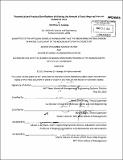| dc.contributor.advisor | David Simchi-Levi and Steven J. Spear. | en_US |
| dc.contributor.author | Kasenga, Matthew O | en_US |
| dc.contributor.other | Leaders for Global Operations Program. | en_US |
| dc.date.accessioned | 2013-09-24T19:36:11Z | |
| dc.date.available | 2013-09-24T19:36:11Z | |
| dc.date.copyright | 2013 | en_US |
| dc.date.issued | 2013 | en_US |
| dc.identifier.uri | http://hdl.handle.net/1721.1/81001 | |
| dc.description | Thesis (M.B.A.)--Massachusetts Institute of Technology, Sloan School of Management; and, (S.M.)--Massachusetts Institute of Technology, Engineering Systems Division; in conjunction with the Leaders for Global Operations Program at MIT, 2013. | en_US |
| dc.description | Cataloged from PDF version of thesis. | en_US |
| dc.description | Includes bibliographical references (p. 89-90). | en_US |
| dc.description.abstract | Amazon has been enjoying a rapid pace of growth over the last few years. One unfortunate side effect of this growth is the overall increased complexity of the network Amazon utilizes to deliver packages from the Amazon warehouses (coined "fulfillment centers" or "FCs") to the final customers. Specifically, Amazon now requires the outbound docks of the FCs to handle more volume that needs to be delivered to more locations. The increased number of outbound locations necessitates more package sorting operations on the dock. This thesis focuses on the operation of the outbound docks and performs time studies, capacity analyses, various warehouse case studies, and discrete event simulations to discover the ultimate bottleneck of a dock as more of these sorts are added. This sorting capacity analysis uncovers that the space available on a dock as an inventory buffer between the sorting and truck loading operations to ultimately be the source of constraint as more sorts are required from a building. This buffer constraint is then explored and quantified to create a mathematical formulation for estimating the ultimate outbound sorting capacity of an FC. Given the max sorting capacity of an FC, this thesis then dives in to the practical applications of operations management principles for executing on a sort plan. The principles of minimizing non-value added work, optimizing the number of packages going through the most labor efficient process paths, worker interference on labor efficiencies, and employing flexible capacity will be explored and applied to the outbound dock. | en_US |
| dc.description.statementofresponsibility | by Matthew O. Kasenga. | en_US |
| dc.format.extent | 90 p. | en_US |
| dc.language.iso | eng | en_US |
| dc.publisher | Massachusetts Institute of Technology | en_US |
| dc.rights | M.I.T. theses are protected by
copyright. They may be viewed from this source for any purpose, but
reproduction or distribution in any format is prohibited without written
permission. See provided URL for inquiries about permission. | en_US |
| dc.rights.uri | http://dspace.mit.edu/handle/1721.1/7582 | en_US |
| dc.subject | Sloan School of Management. | en_US |
| dc.subject | Engineering Systems Division. | en_US |
| dc.subject | Leaders for Global Operations Program. | en_US |
| dc.title | Theoretical and practical ramifications of altering the amount of sorts required from an outbound dock | en_US |
| dc.type | Thesis | en_US |
| dc.description.degree | S.M. | en_US |
| dc.description.degree | M.B.A. | en_US |
| dc.contributor.department | Leaders for Global Operations Program at MIT | en_US |
| dc.contributor.department | Massachusetts Institute of Technology. Engineering Systems Division | |
| dc.contributor.department | Sloan School of Management | |
| dc.identifier.oclc | 857789515 | en_US |
